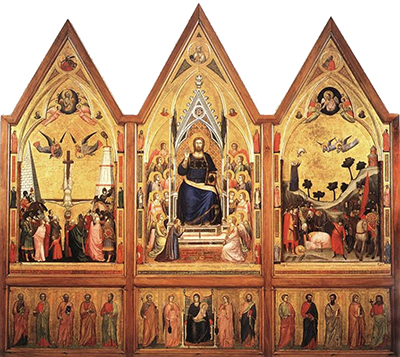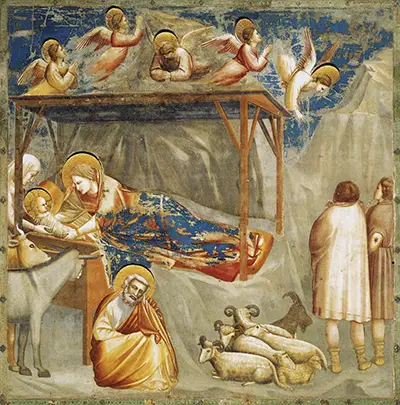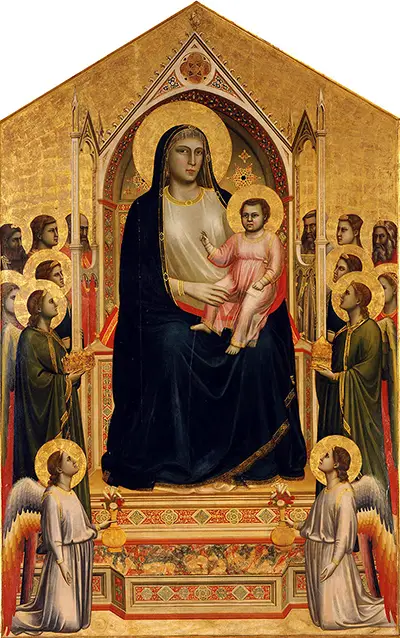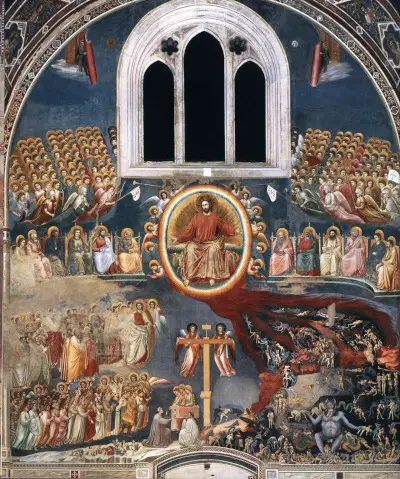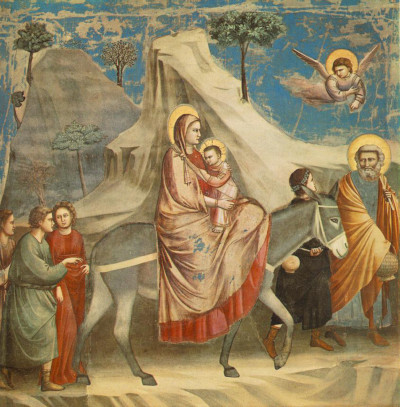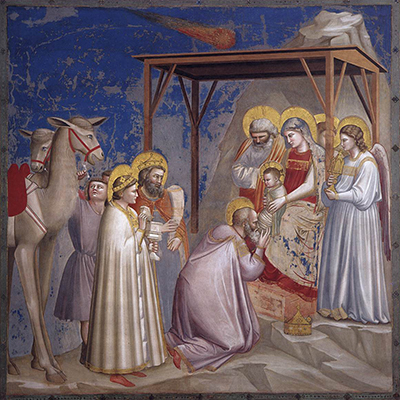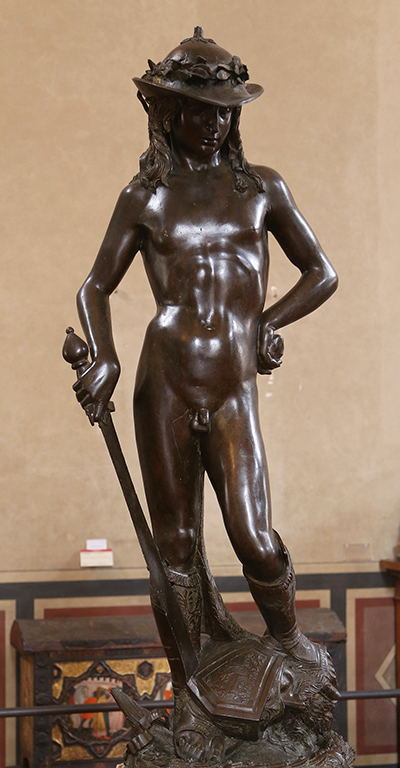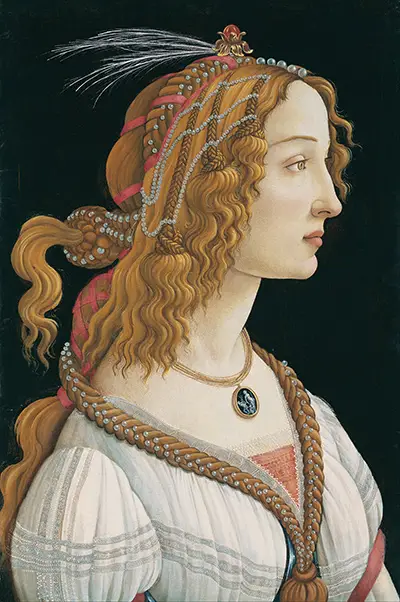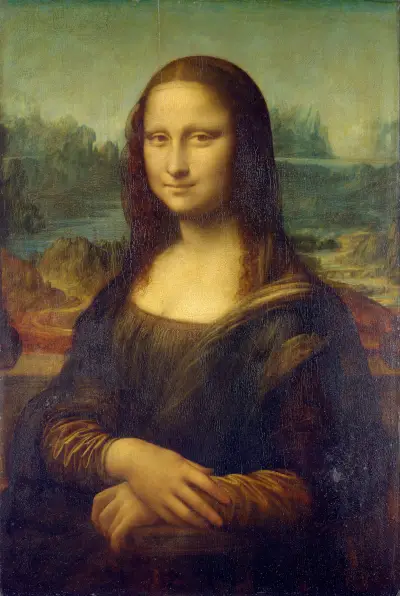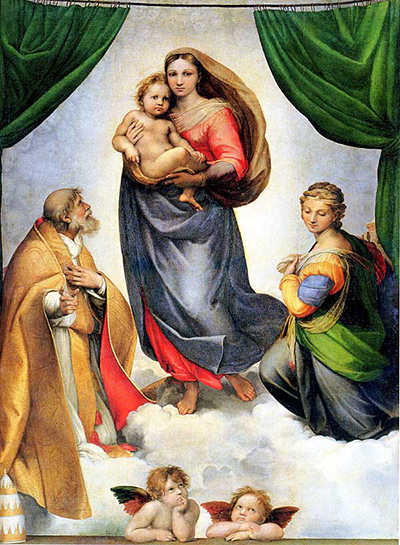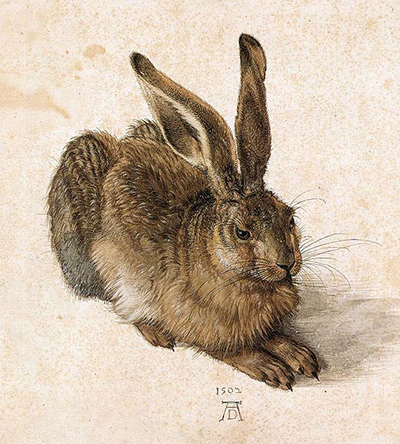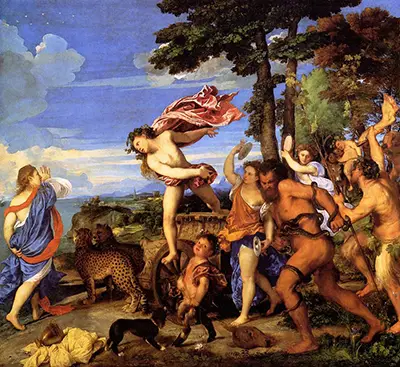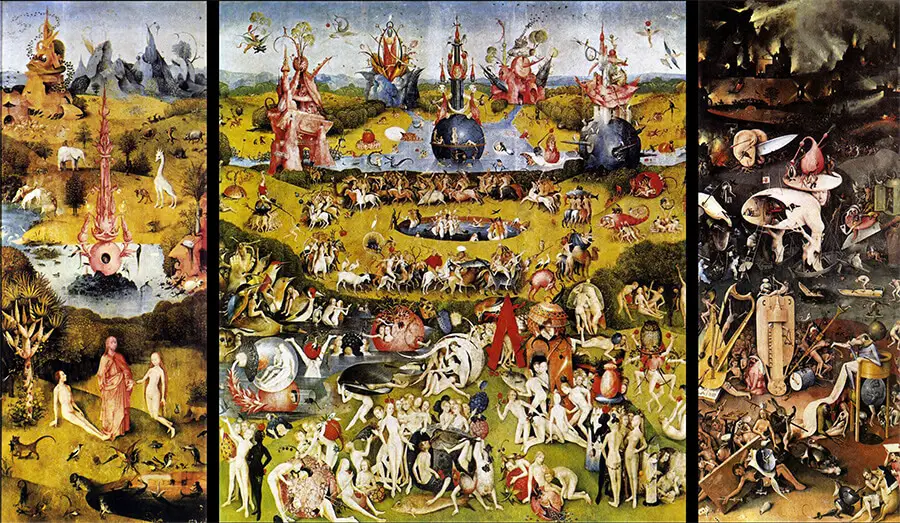The Franciscan Allegories was a series of artworks produced by Giotto in around 1320.
Return to the Basilica of St Francis of Assisi
Having originally worked in the Upper Church of San Francesco, Assisi, some two decades earlier, the artist was now commissioned to decorate the Lower Church.
Allegories of Poverty, Obedience and Chastity
The allegories of Poverty, Obedience and Chastity are represented here in separate portions, with the overall artwork spread across the ceiling. Architectural features then cross the piece which was clearly designed with the installation process in mind.
Customized Designs
Each artwork features tall figures who are directed towards the center of the ceiling. They also naturally lean in the same direction, helping to lead the eye to the very center of the room. The arches that cross between each allegory are also beautifully decorated, with every possible avenue of creativity filled with color and form.
Due to the nature of the architecture, each allegory is curved upwards from the bottom, and thus the artist had to adapt each artwork to match this. In some cases he would leave a mustard brown finish beneath the main figures, allowing them to be lined up in a flat line.
Highly Developed Figures
One of the most notable parts of the Franciscan Allegories is in how Giotto develops his figures. Having evolved as an artist for several decades already, it is notable to see how much detail and uniqueness is given to each figure, even for those supporting characters.
The artist would not simply throw in extra figures as a side thought, but instead consider each one carefully. Some would interact with each other, or perhaps perform tasks related to the overall narrative. There was no sense of rushing this complex arrangement, and this ensured continued work for Giotto, even though some of his projects would over run.
It is unfortunate that many are unable to make out the precise detail in these artworks because of their location on the ceiling of this basilica. The forms are beautifully delivered, with more contrast and a solid method of restoration to keep this project in good condition.
Polished Architectural Features
The architectural touches are also bolder than in his earlier works, with highly ornate turrets and a real confidence which came from an artist who enjoyed a strong reputation and continual work.
Adapted Composition
The way in which Giotto adapts to the restrictive ‘canvas’ is also impressive. Figures are individually and collectively angled to suit the encroaching crossed arches. There is a sense of organic comfort between the allegories and their host, and Giotto would have had plenty of practice with these challenges as a religious artist of that period.
Conclusion
Giotto’s Franciscan Allegories continued his work in the Basilica of St Francis of Assisi and delivered some of the most complex and finely tuned figures found in his entire career. This was an artist at his peak, from the colors, to the complex arrangement and interactions of his figures, to the incredibly ornate architectural features. This ceiling display reminds us also of the importance of his work in Assisi to Giotto’s oeuvre in general.
Additionally, the careful preservation work has ensured that the original qualities are still very much evident, all these centuries later. Without the work to protect Giotto’s innovations, the halos and bright tones would fade, and much of the original detail would have been lost.
More Renaissance Artists



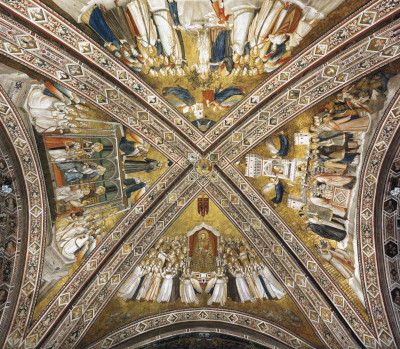
 Giotto.jpg)
 Giotto.jpg)
